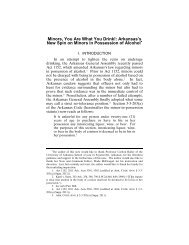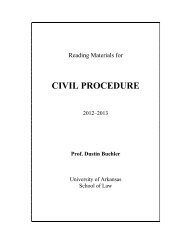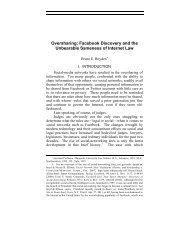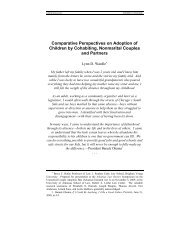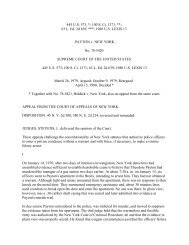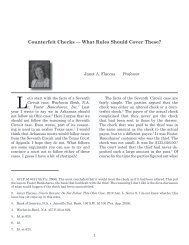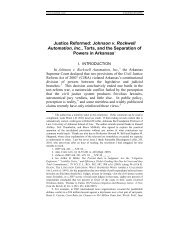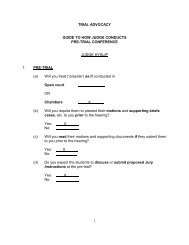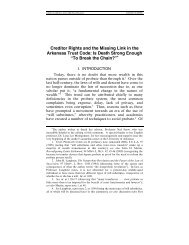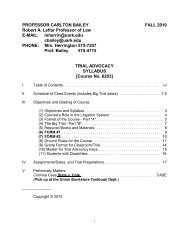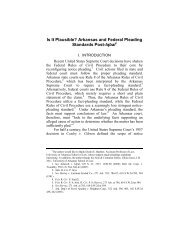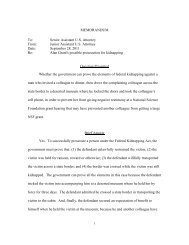Recent Developments - Arkansas Law Review
Recent Developments - Arkansas Law Review
Recent Developments - Arkansas Law Review
Create successful ePaper yourself
Turn your PDF publications into a flip-book with our unique Google optimized e-Paper software.
(16) RECENT DEVELOPMENTS.DOC 4/23/2010 3:08:33 PM<br />
450 ARKANSAS LAW REVIEW [Vol. 63:449<br />
for purposes of the savings statute. On June 9, 2009, the trial<br />
court granted this motion. It subsequently denied the Tuckers’<br />
motion for reconsideration, and the Tuckers appealed.<br />
On appeal, the primary issue facing the <strong>Arkansas</strong> Supreme<br />
Court was whether the Tuckers, by filing their second complaint<br />
and completing service for that complaint, had successfully<br />
commenced a “new action” for purposes of the savings statute.<br />
The court began by examining the language of the <strong>Arkansas</strong><br />
savings statute, which provides:<br />
If any action is commenced within the time respectively<br />
prescribed in this act, in §§ 16-116-101 – 16-116-107, in §§<br />
16-114-201 – 16-114-209, or in any other act, and the<br />
plaintiff therein suffers a nonsuit, or after a verdict for him<br />
or her the judgment is arrested, or after judgment for him or<br />
her the judgment is reversed on appeal or writ of error, the<br />
plaintiff may commence a new action within one (1) year<br />
after the nonsuit suffered or judgment arrested or reversed.<br />
(quoting Ark. Code Ann. 16-56-126(a)(1) (Repl. 2005)).<br />
Overall, the court noted, the savings statute is to receive a<br />
“liberal and equitable construction” to give parties a reasonable<br />
amount of time to renew their cause of action. (citing Rettig v.<br />
Ballard, 2009 Ark. 629, at 4, __ S.W.3d __, __). As a result, in<br />
prior opinions, the court had held that, to “commence a new<br />
action” and take advantage of the savings statute, the plaintiff<br />
need only file a complaint and complete timely service on a<br />
defendant, even if that service is later invalidated. (citing id.at 4,<br />
__ S.W.3d at __).<br />
On appeal, both the plaintiffs and defendant cited cases<br />
from the <strong>Arkansas</strong> Court of Appeals in support of their<br />
respective positions. (citing Tech. Parts., Inc. v. Regions Bank,<br />
97 Ark. App. 229, 245 S.W.3d 687 (2006); Hill-Rom, Inc. v.<br />
Swink, 65 Ark. App. 71, 984 S.W.2d 834 (1999)). In<br />
Technology Partners, which Sullivant cited, a plaintiff took a<br />
voluntary nonsuit and, nearly one year later, attempted to file an<br />
amended complaint under the old docket number, naming a new<br />
defendant. (citing Tech. Parts., 97 Ark. App. at 238, 245 S.W.3d<br />
at 695). When the trial court dismissed the amended complaint<br />
due to the prior dismissal of the claim, the plaintiff filed a new<br />
complaint more than a year after the original voluntary nonsuit.<br />
(citing id.). The <strong>Arkansas</strong> Court of Appeals held that the



